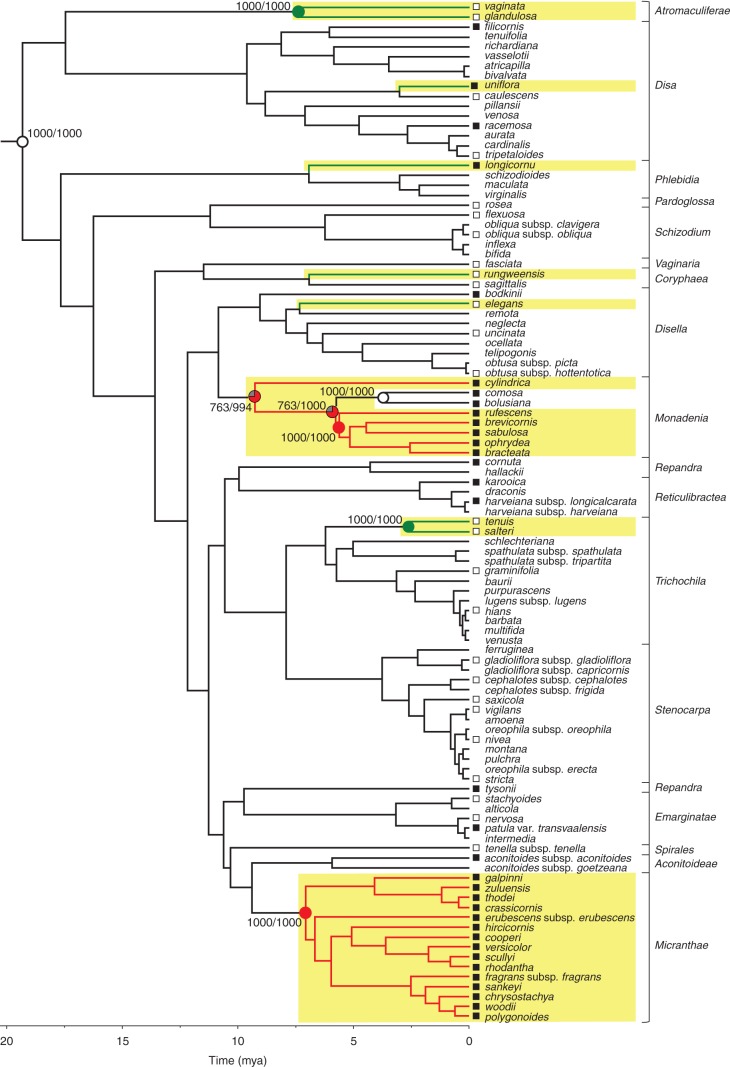Fig. 6.
Evolution of nectary types in 103 Disa species based on parsimony reconstruction. From an ancestor without nectaries, stomatal nectaries evolved at least twice (red branches) and nectar-secreting epidermis evolved six times (green branches). Nectar-producing clades are highlighted in yellow. Parsimony reconstruction of ancestral states over 1000 chronograms are summarized on the maximum-clade credibility chronogram. Empty circles indicate absence of (root) or loss of nectaries, filled circles mark nodes for which evolution of the respective nectary type is supported as optimal state by parsimony reconstruction in ≥75 % of trees containing the node (grey sectors represent the proportion of equivocal reconstructions). Support values indicate (number of trees in which state was identified as optimal/number of trees containing the node). Squares at branch tips indicate presence (filled symbols) or absence (open symbols) of stomata in 60 species examined by scanning electron microscopy or high-magnification light microscopy. For support values of all nodes see Supplementary Data Table S3. Rectangular brackets delimit Disa sections according to Bytebier et al. (2008).

